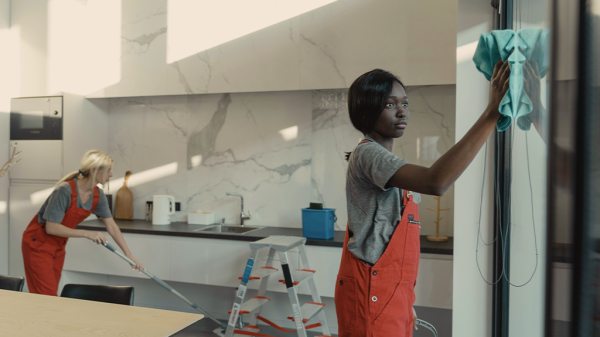The Green Resources Council featured in their monthly newsletter an interview with Sandy Adomatis of Adomatis Appraisal Service in Punta Gorda, Fla who specializes in green appraisals. I found her comments and suggestions to be completely relevant and right on.
My big “aha’s” are that anyone having a part in greening their MLS should evaluate how “appraiser” friendly it is. Agents should be providing documentation of the green certifications to the appraiser and make sure we are inviting appraisers to be a part of the dialogue and networking within the green building industry. She references a lack of knowledge by appraisers about what green features are and what they actually mean in terms of value which again brings me to the point that I feel lenders/agents should be allowed to request a green certified appraiser to evaluate a green certified home.
I have cut and pasted the entire transcript below:
1. Reading trends, finding comps: Making apples-to-apples comparisons is crucial, but in many markets comparables are in short supply. It’s also difficult for appraisers to identify green trends and the features consumers want.
Solution: “When you’re writing descriptions, put in green features and show us the trends,” she comments. Play up anything having to do with green, such as solar panels, efficient appliances, and green certifications to make it simple for appraisers to search for and identify green properties.
2. Documentation: She encounters the customary problems associated with greenwashing and of properties being labeled green that only have some green features or appliances. Appraisers waste lots of time chasing down paperwork to substantiate green claims.
Solution: Be watchful about properly distinguishing between properties with green features and those with certifications. Also have documentation at the ready that substantiates all green claims and be prepared to share it with appraisers.
Adomatis applauds the green MLS systems, such as the one in Arizona, that require practitioners to upload green documentation along with their listings and how properties without such documentation are automatically deleted. “That should be a standard,” she says. “It would stop greenwashing.”
3. Leverage the green MLS: Some MLS systems require listing agents to include an exact HERS number. But when appraisers do data searches, they must plug in that exact number to get that HERS-rated house to pop up. It’s arduous and inefficient. And an appraiser could miss out on a strong comparable.
Solution: If you’re involved with your green MLS committee, keep tabs on the coding tweaks that can make locating certified properties easier for appraisers. Consider allowing practitioners to include HERS ranges, such as a range of 50 to 70. The exact HERS number could be included in the features and comments section.
4. Cross training: Real estate practitioners need to understand the appraisal process and its challenges, and appraisers need to understand real estate practitioners’ business. Yet Adomatis sees too few getting such cross education.
Solution: Get professionals from all industries together. Include appraisers in green networking events and invite them to join green business groups and to talk at sales meetings and association events.
Different professions can work together
Adomatis conducted a seminar for builders, appraisers and lenders. As a result of face-to-face chats, members from the different professions found ways that they could better work together for mutual benefit.
“Light bulbs went off,” she recalls. Some builders realized they had valuable documents, such as green certification and HERS ratings that often never made it into the hands of appraisers.
The same aha moments can happen when real estate practitioners and appraisers get together, believes Adomatis.
To learn more about green appraisals, Adomatis suggests two Appraisal Institute classes, “Introduction to Green Buildings: Principles & Concepts” and “Case Studies in Appraising Green Residential Buildings.”
Anna Altic – Village Real Estate Services. I’ve called Nashville home for the last 15 years and have been practicing (practice being the key word here) real estate for just over 6 years. In the fall of 2007, I went to a local German Festival that had a home tour, including a LEED certified property, and I instantly became enamored with the idea of eco friendly living (ok, so I’d had a little beer and the dual flush toilet rocked my world). I have since devoted much of my time and energies in to studying and espousing the benefits of better building technology within our local residential market and my proudest accomplishment thus far has been successfully leading the initiative to get over 25 green features added to our MLS search fields.










































Manhattan Beach Agent
July 30, 2011 at 4:39 pm
Green is definitely the hot new thing in real estate, so I like that you made the distinction between green certifications versus single "green" appliances, or features. Greenwashing is unfortunately increasingly common with the increased popularity of eco-conscious buyers.
Kent Gage
July 31, 2011 at 1:38 pm
It is a shame that we are constantly barraged with "greenie" nonsense such as the article above. This is the same groupthink that brought us low water volume toilets that have to be flushed more than once and compact fluorescent light bulbs that can't be just thrown away because of their mercury content. These light bulbs may even save a household $100 in energy in ten years. This leads us to the premium cost of construction and high rents required to recover those costs in LEED certified 'energy efficient' commercial buildings. The savings that may accrue in energy savings have been estimated to take over 20 years and that is with current government subsidies.
In the current commercial real estate market, with excessively high vacancy in office and retail space, few tenants, (outside of the government) who are responsible for their own funds, would rent the more expensive LEED space to gain miniscule savings where substantially lower rents of similar class, but uncertified building space, are available. This is the basic economic principle of substitution. Much of this is bureaucratic driven nonsense that is revealed as much less cost effective when actually analyzed.
I have attended several of the LEED seminars and no actual savings figures were made available, just the subsidies.
Unfortunately, the same applies to the residential market that is overflowing with distressed properties.
The remainder of the article appeared more self congratulatory than informative.
Gmac Home Loans
April 24, 2012 at 3:34 am
Excellent tips; more buyers are interested in green homes and it’s definitely important to be aware of subtle differences between certifications in order to represent the property accurately.